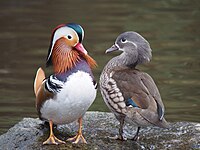
Gender dimorphism in Corema album across its biogeographical area and implications under a scenario of extreme drought events
Sign Up to like & getrecommendations! Published in 2018 at "Environmental and Experimental Botany"
DOI: 10.1016/j.envexpbot.2018.08.011
Abstract: Abstract In dioecious species, traits may have evolved because of significantly different resource demands associated with male versus female sexual reproduction. It is generally assumed that females have higher reproductive costs, thereafter in long-lived species,… read more here.
Keywords: dimorphism; drought; water; area ... See more keywords

Intestinal microbiota, metabolome and gender dimorphism in autism spectrum disorders
Sign Up to like & getrecommendations! Published in 2018 at "Research in Autism Spectrum Disorders"
DOI: 10.1016/j.rasd.2018.01.009
Abstract: Abstract There is a male predominance in autism, with a male/female ratio of 4:1 and an even higher ratio (11:1) in individuals with high functioning autism. The reasons for gender differences in ASD are unknown.… read more here.
Keywords: gender dimorphism; autism; metabolome; intestinal microbiota ... See more keywords

Gender dimorphism in survival of patients with lymph node metastasis of bladder cancer
Sign Up to like & getrecommendations! Published in 2022 at "Therapeutic Advances in Medical Oncology"
DOI: 10.1177/17588359221108690
Abstract: Background: The effect of gender on the prognosis of bladder cancer (BCa) in different metastatic sites is insufficiently understood. We aimed to assess the impact and potential mechanisms of a combination of gender dimorphism and… read more here.
Keywords: metastasis; gender dimorphism; patients lymph; gender ... See more keywords

Gender Dimorphism Does Not Affect Secondary Compound Composition in Juniperus communis After Shoot Cutting in Northern Boreal Forests
Sign Up to like & getrecommendations! Published in 2018 at "Frontiers in Plant Science"
DOI: 10.3389/fpls.2018.01910
Abstract: Due to a difference in plant resource allocation to reproduction, the males of dioecious plants may be more growth-orientated, whereas females may allocate more resources for synthesizing secondary compounds. This mechanism is considered to cause… read more here.
Keywords: gender dimorphism; dimorphism; plant; shoot cutting ... See more keywords